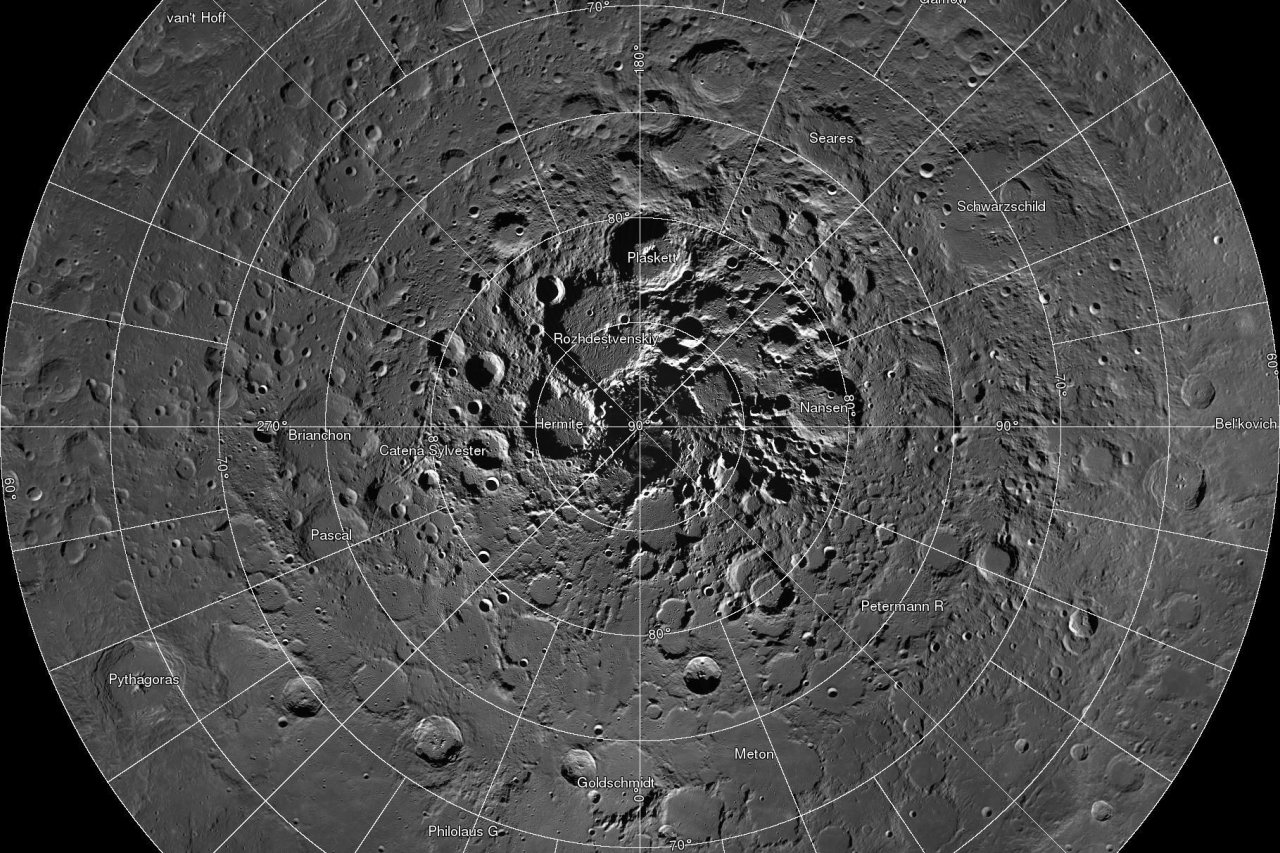
Small holes in a large crater near the North Pole of the moon may offer sky-lit entrances to an underground network of lava tubes, according to a new discovery. The holes could offer passageways into the moon's interior, where scientists believe we could find ice. A potential water resource on the moon would be hugely valuable for humans and robotic spacecraft alike—and if there is underground ice, the lunar north pole may be our best chance of finding it.
These suspected skylights, according to research presented this week at NASA's Lunar Science for Landed Missions Workshop, are holes in the ceilings of lava tubes, which are empty tunnels leftover from volcanoes that erupted when the moon was geologically active millions of years ago. Lava tubes also form here on Earth (and are expected to have done the same on Mars) during some volcanic eruptions—specifically when the outer edges of a lava flow cool, encasing the warmer, still-flowing lava.
On the moon's surface, those tunnels show up as narrow, winding depressions called sinuous rilles for their winding shape, which scientists believe trace the paths of squashed lava tubes. But sometimes patches of the ceiling of these tunnels cave in, leaving what look like skylights.
Scientists had already spotted about 200 of what they believe are lava tube skylights closer to the moon's equator in previous research. In images of the lunar surface, these openings don't quite look like craters caused by impacts: the skylights don't have rims. Last fall, scientists suggested that lava tubes—and skylight entrances into them—might be a crucial resource not only for learning about the geology of the moon, but also for sheltering future human explorers.
Read more: China Plans Far Side of the Moon Landing for 2018 in World First
But unlike the previously discovered entrances, the newly-identified potential skylights would be much closer to the moon's pole, at about 340 miles away, or about 70 degrees north. That makes them tantalizingly close to one of the moon's most valuable resources: water ice.
"We are looking at good candidates considering simultaneously their size, shape, lighting conditions and geologic setting," lead researcher Pascal Lee, a planetary scientist at NASA Ames and at the nonprofit research organizations the SETI Institute and the Mars Institute, said in a press release.
NASA's current focus, as ordered by President Donald Trump in December, is landing humans on the moon again for the first time since the 1970s and commercial companies also have their eyes on the moon.
For either crewed missions or robotic ones, if the skylights make polar ice more accessible, they'll be even more crucially important. Of course, humans need water to survive, and the less they can tote with them the better, but water could also become a fuel for rockets.
"Our next step should be further exploration, to verify whether these pits are truly lava tube skylights, and if they are, whether the lava tubes actually contain ice," Lee said. "This is an exciting possibility that a new generation of caving astronauts or robotic spelunkers could help address."














